Galapagos Species Database
The Galapagos Species Database shares the information about the species from our Natural History Collections.
Alternanthera nesiotes
alternanthera
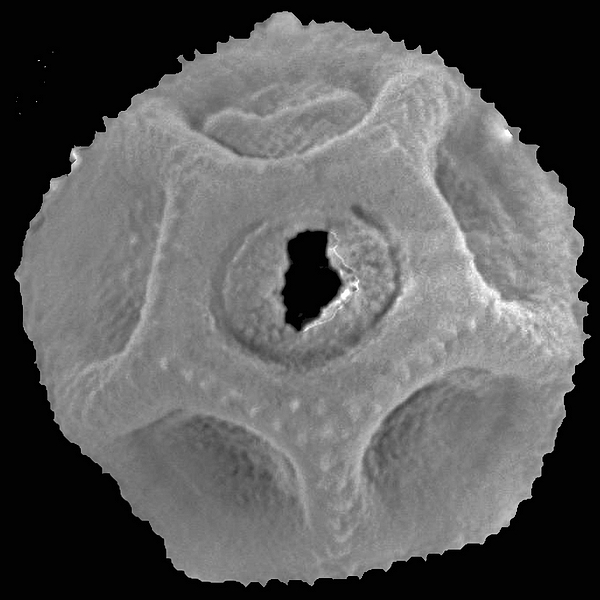
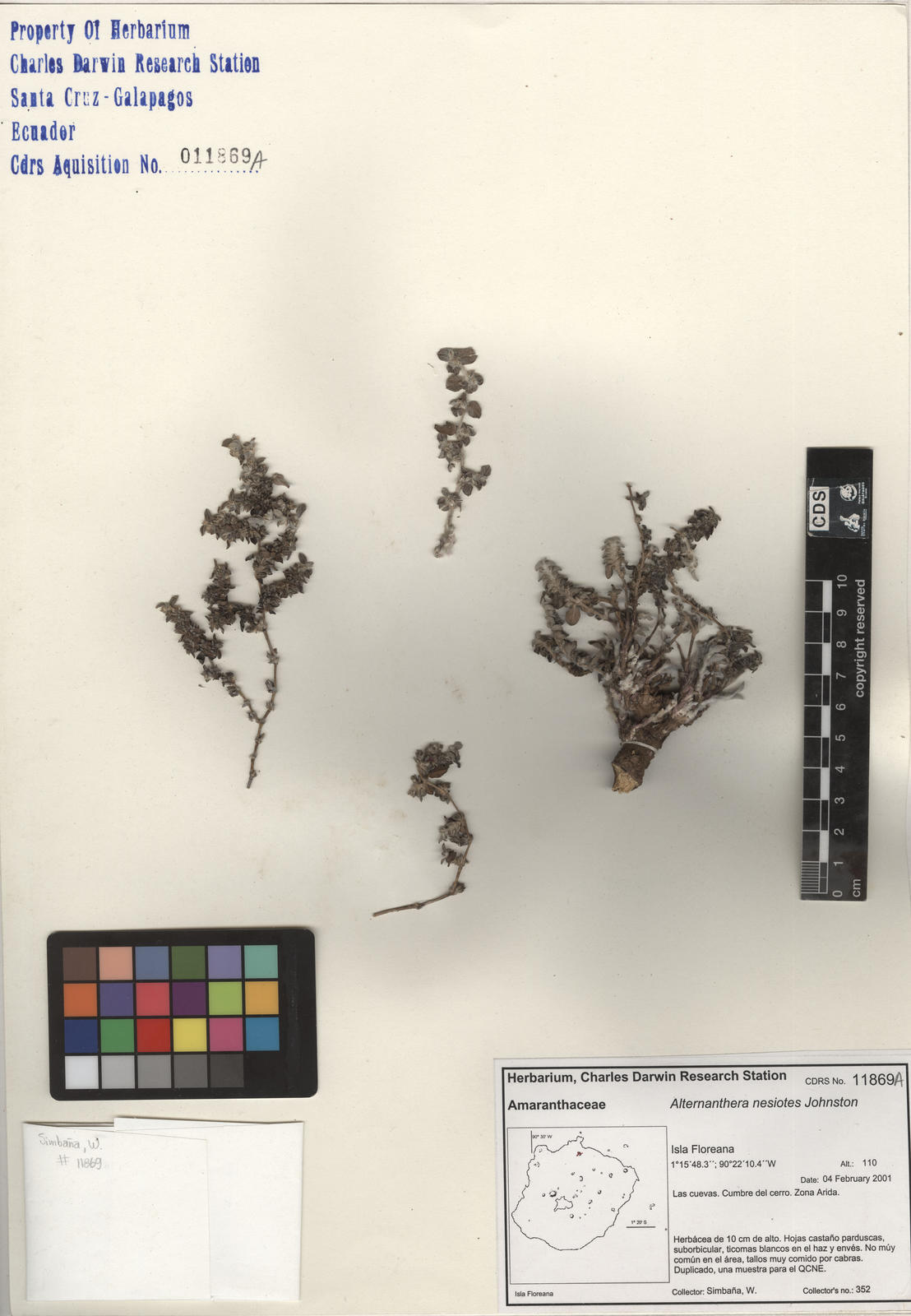
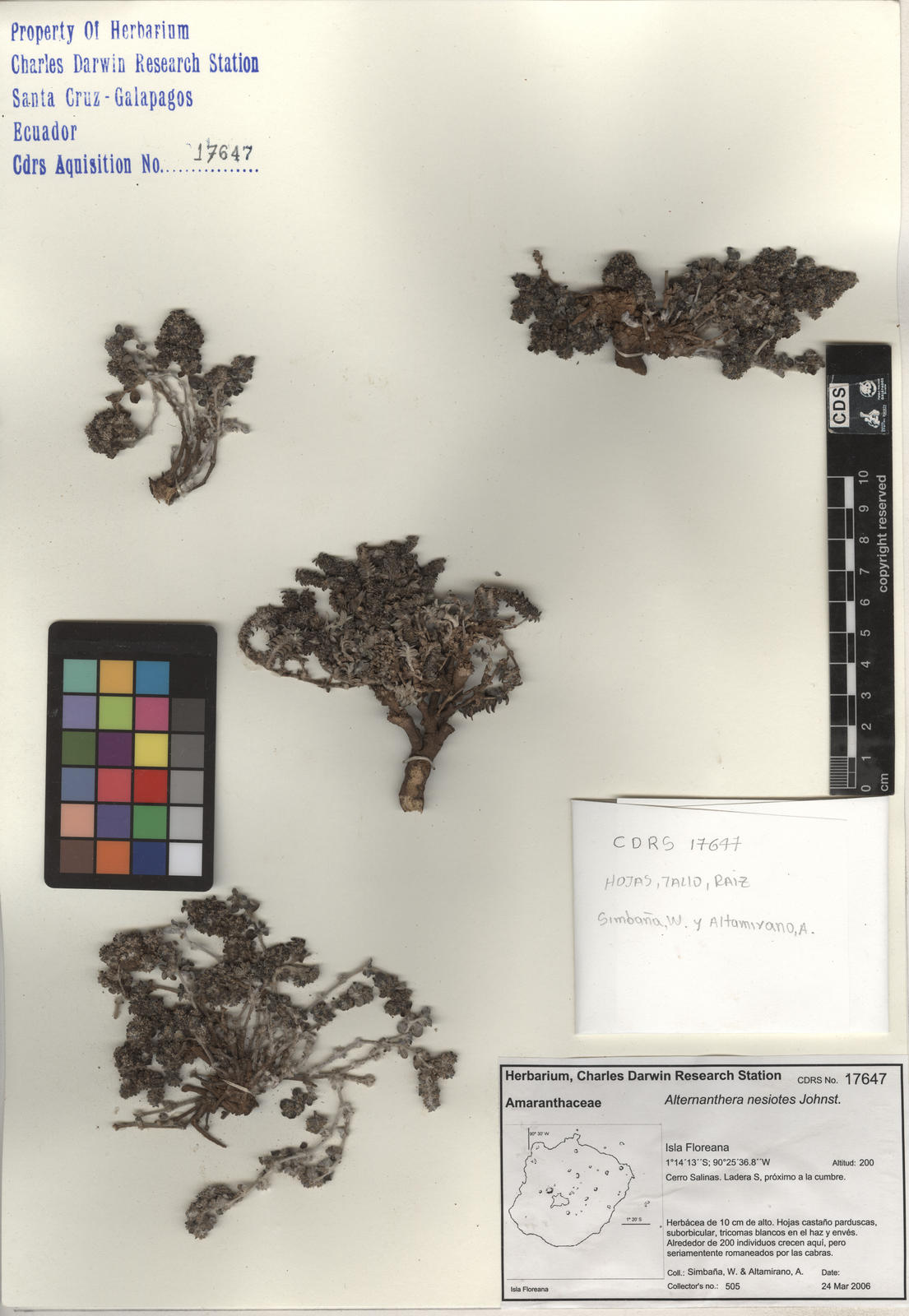
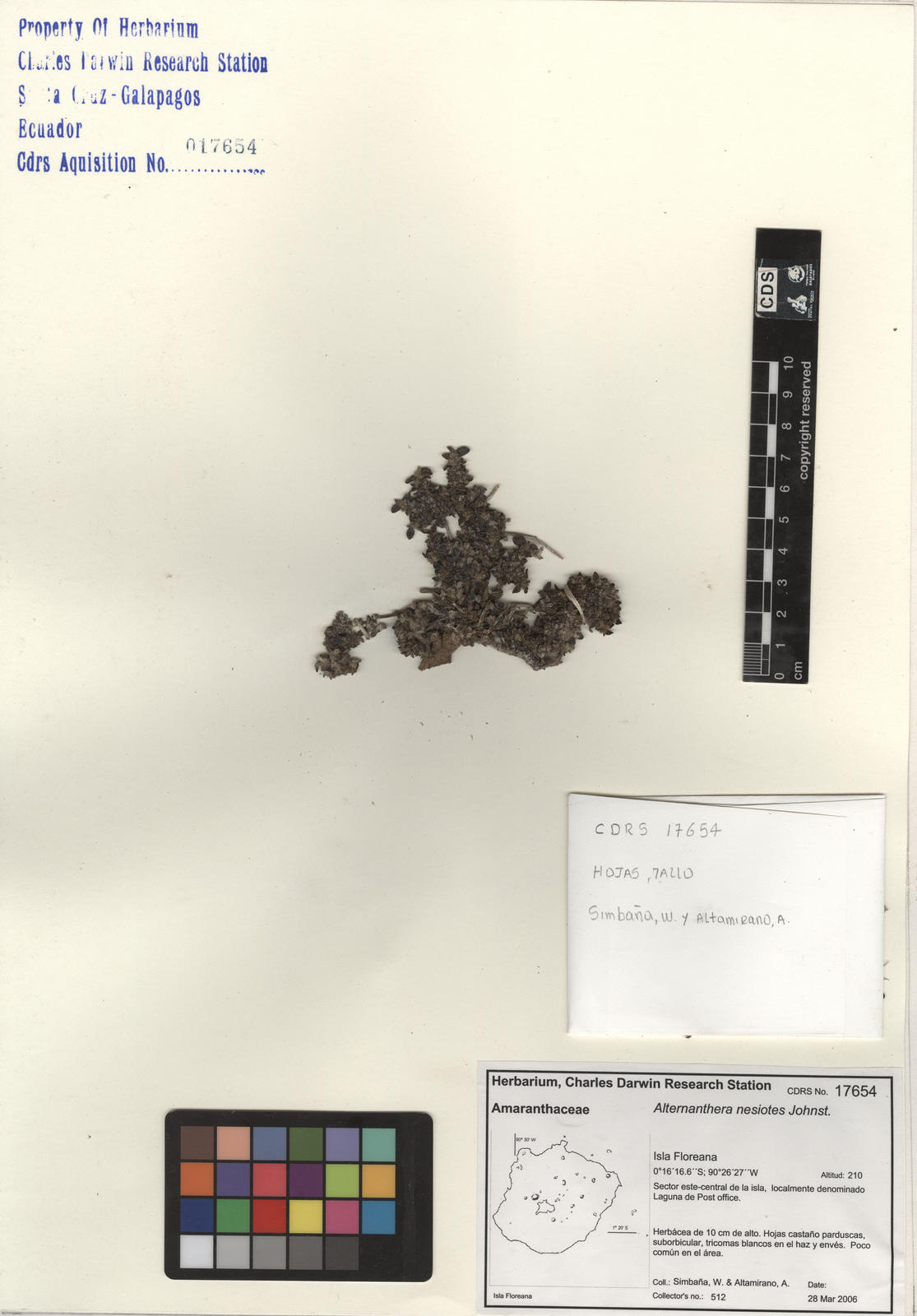
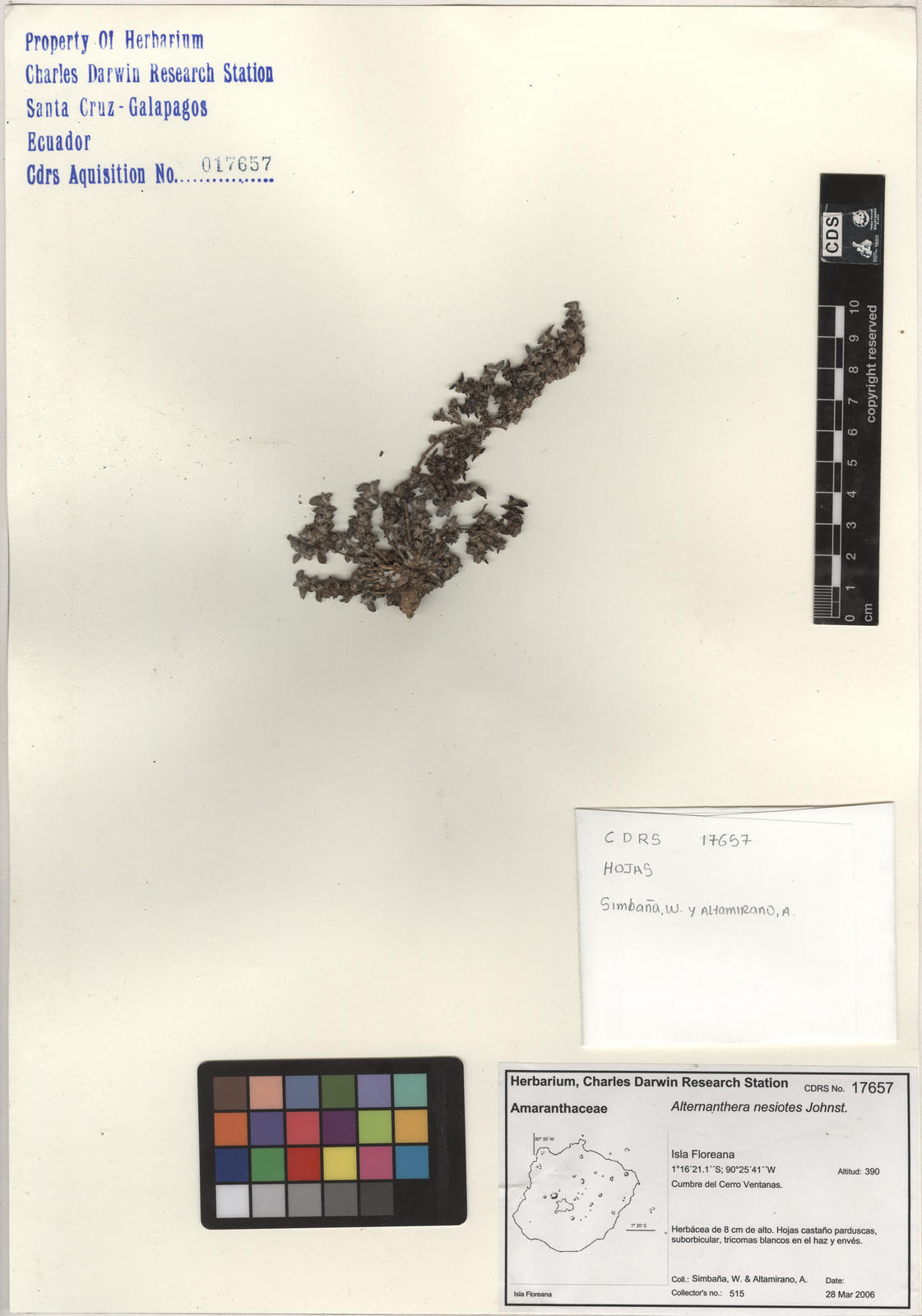
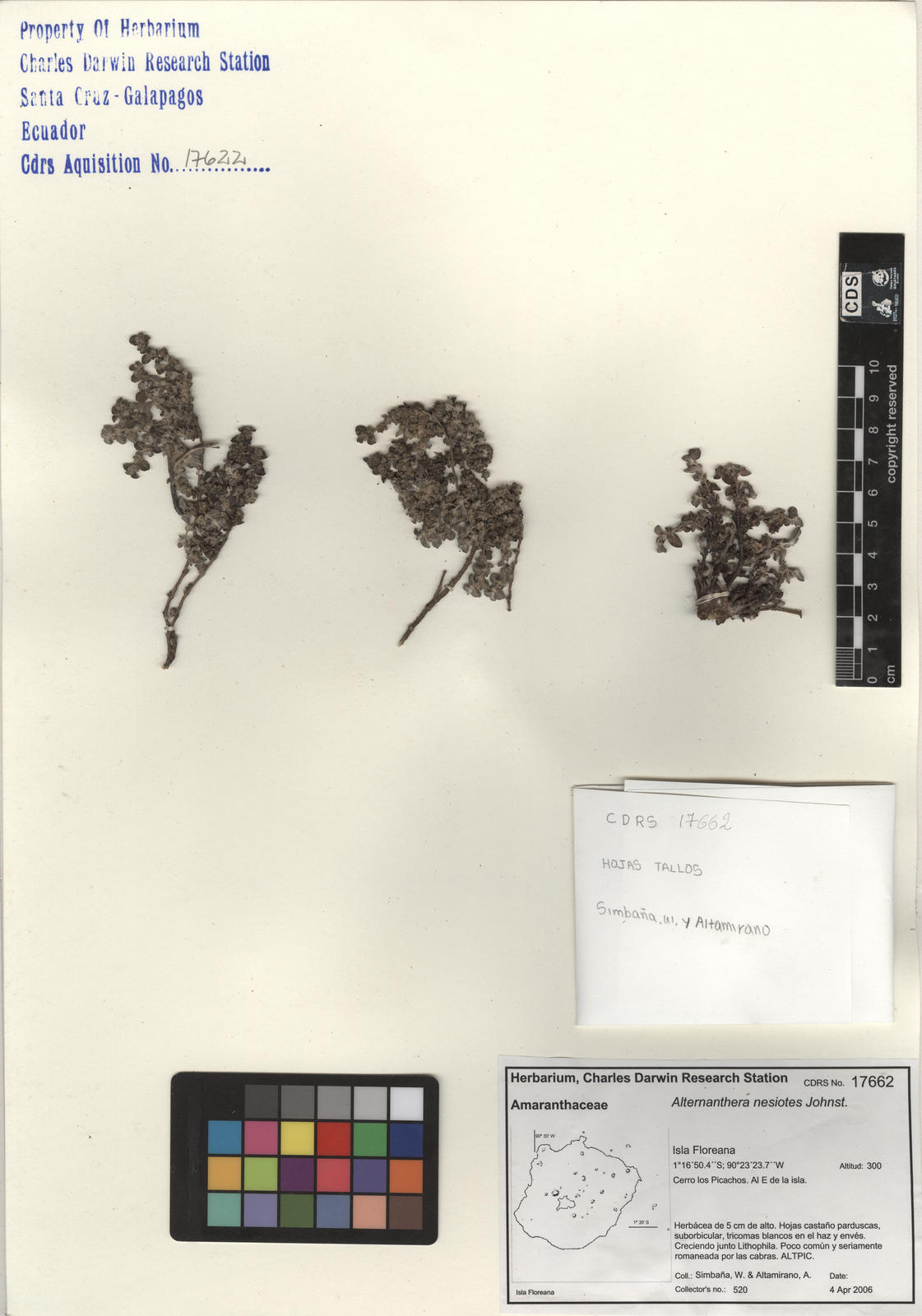

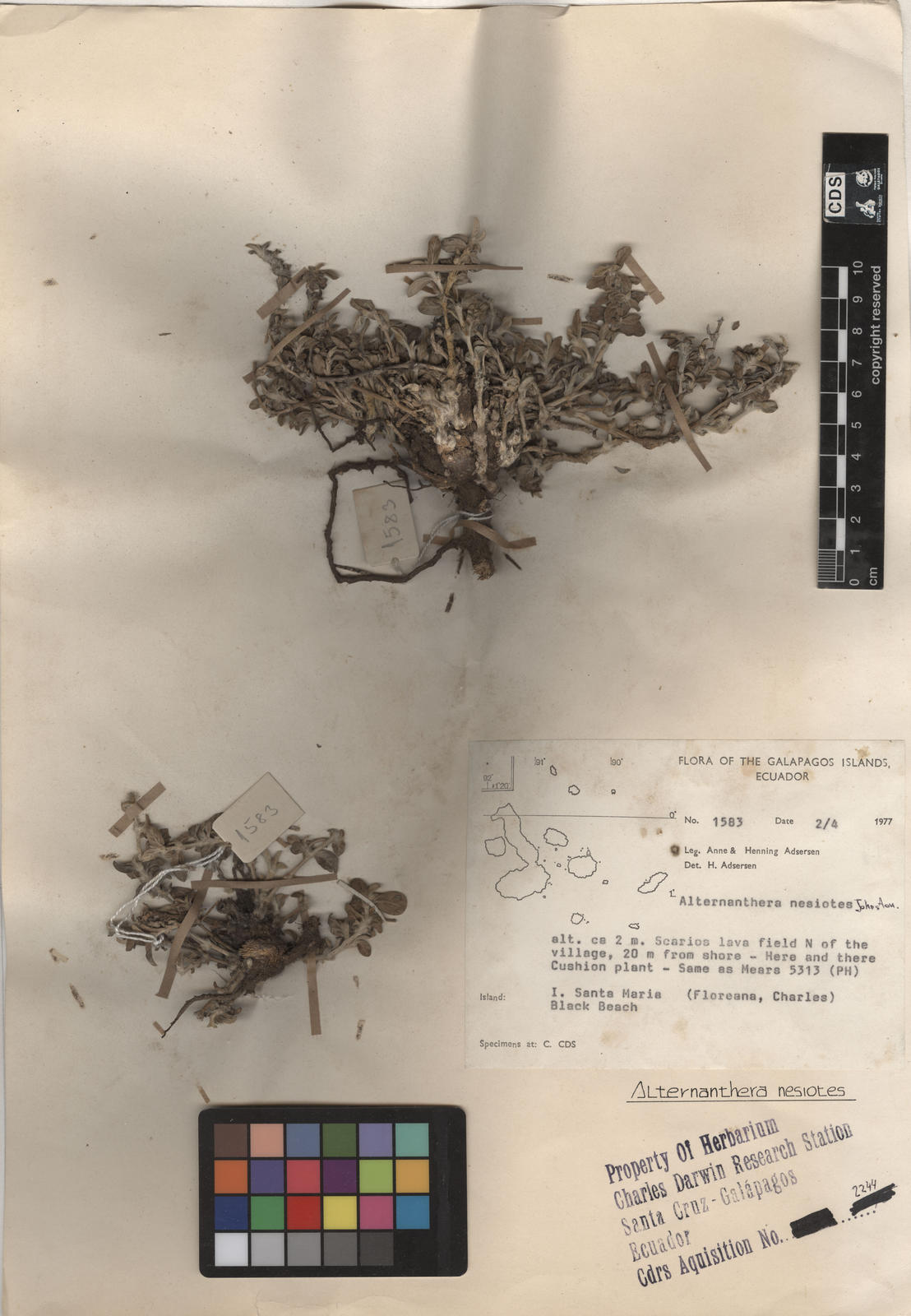

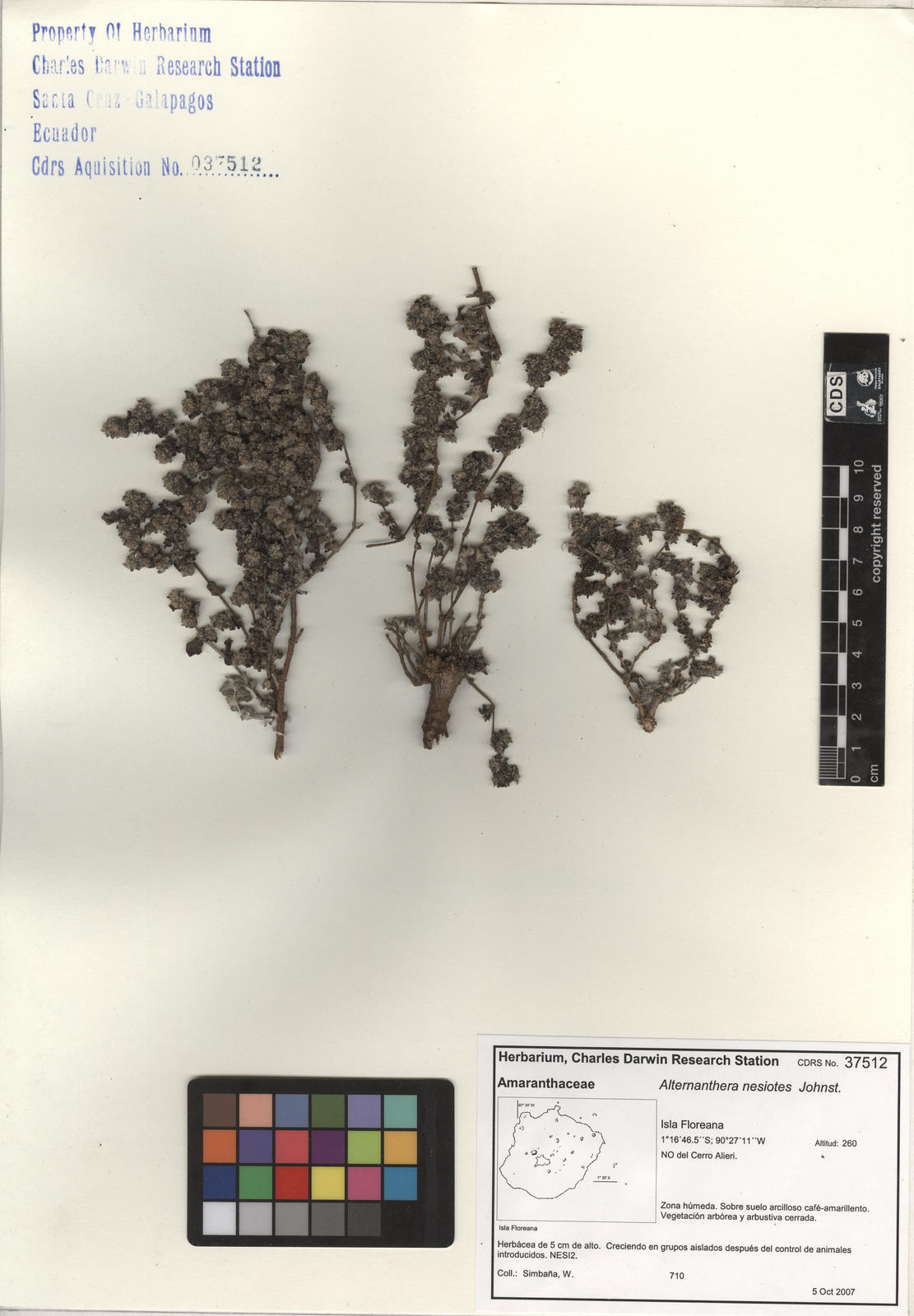
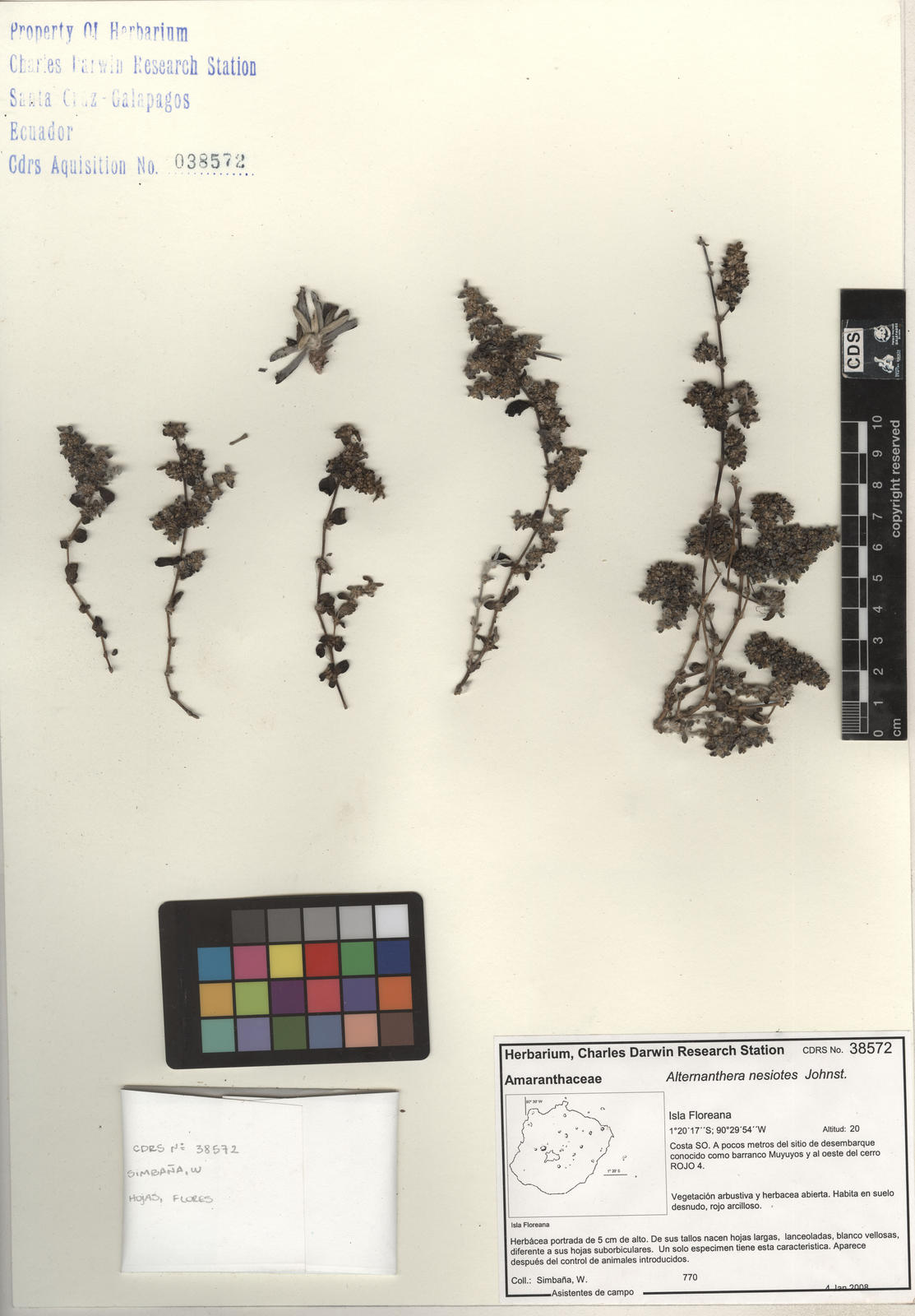
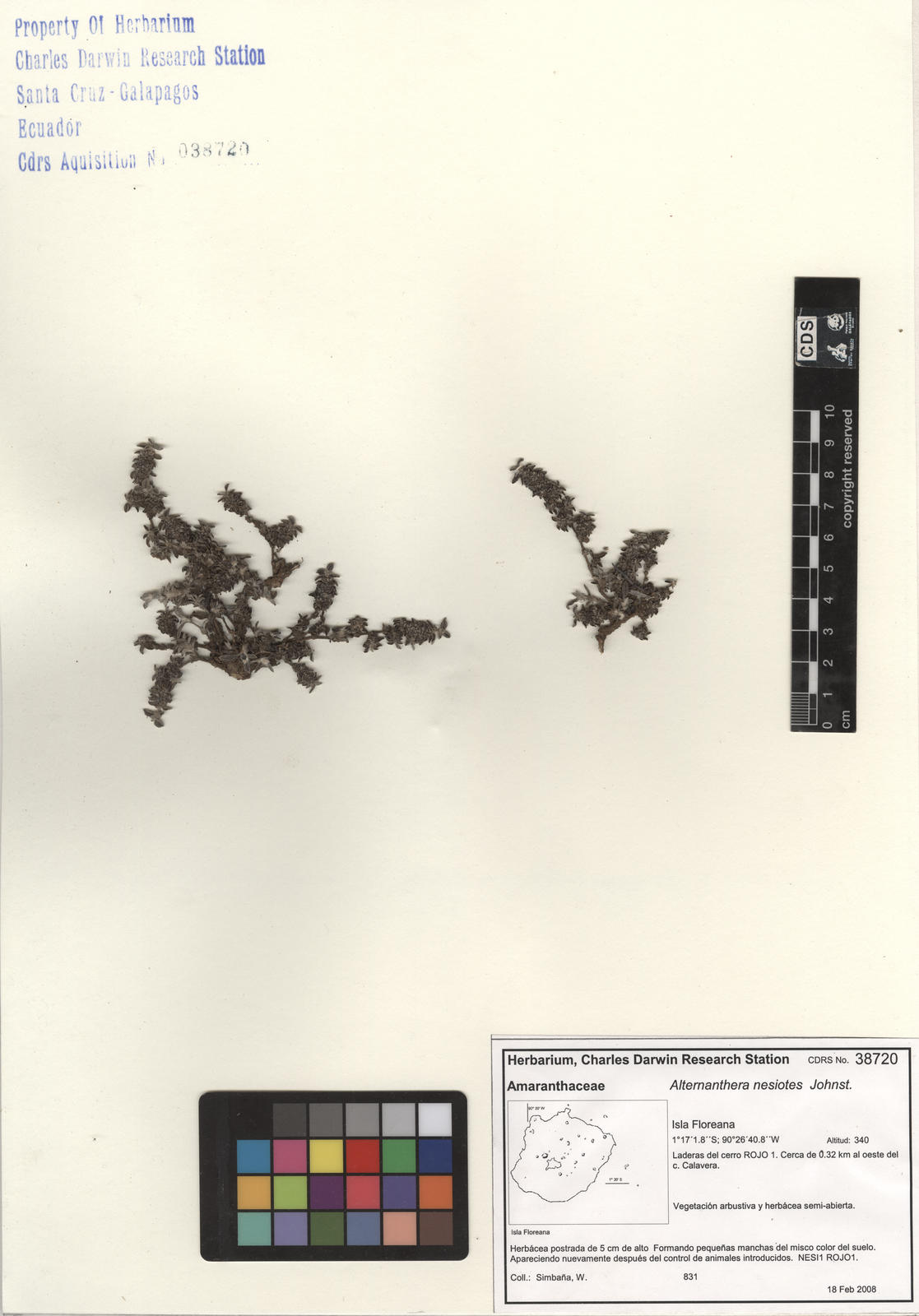
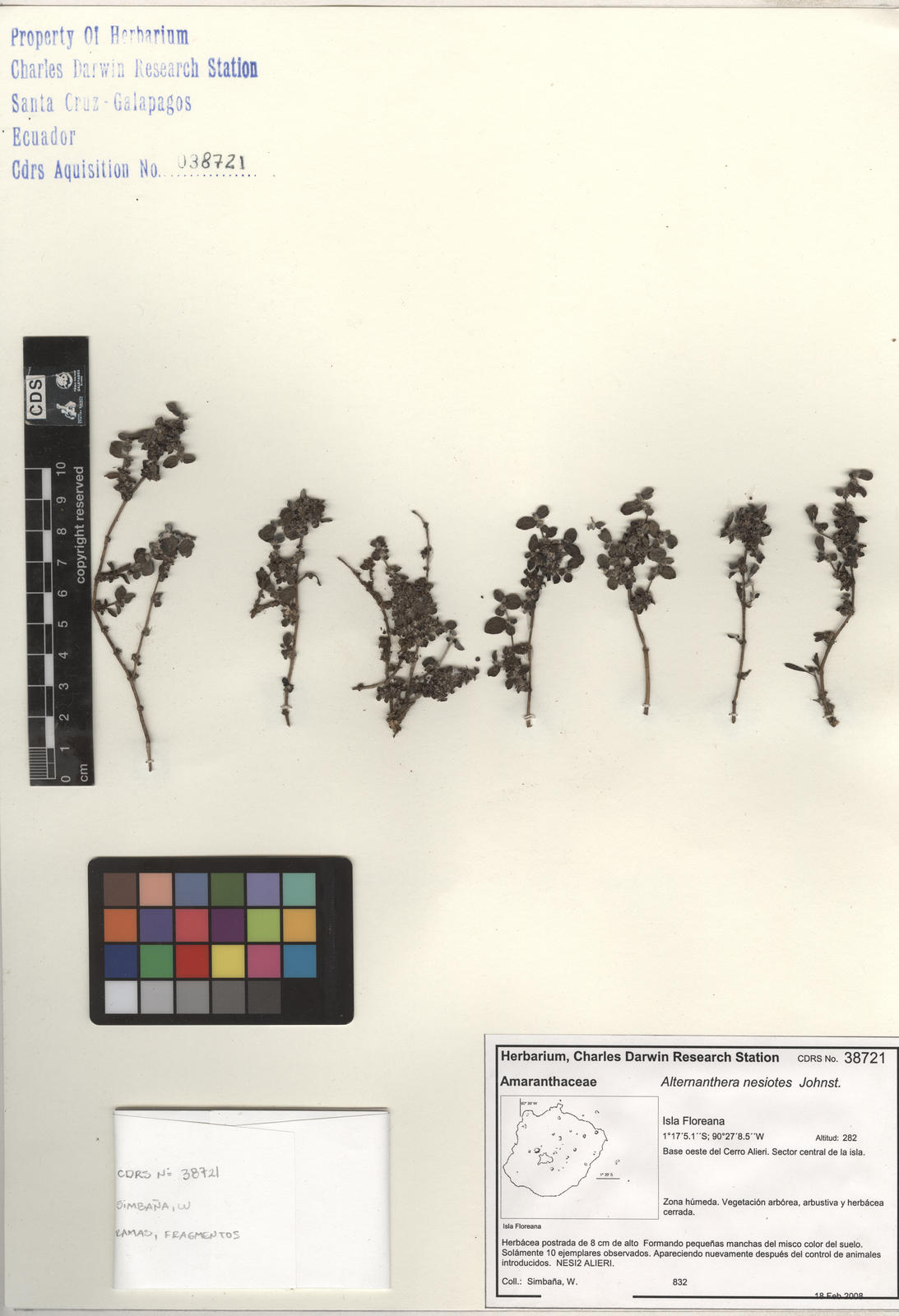
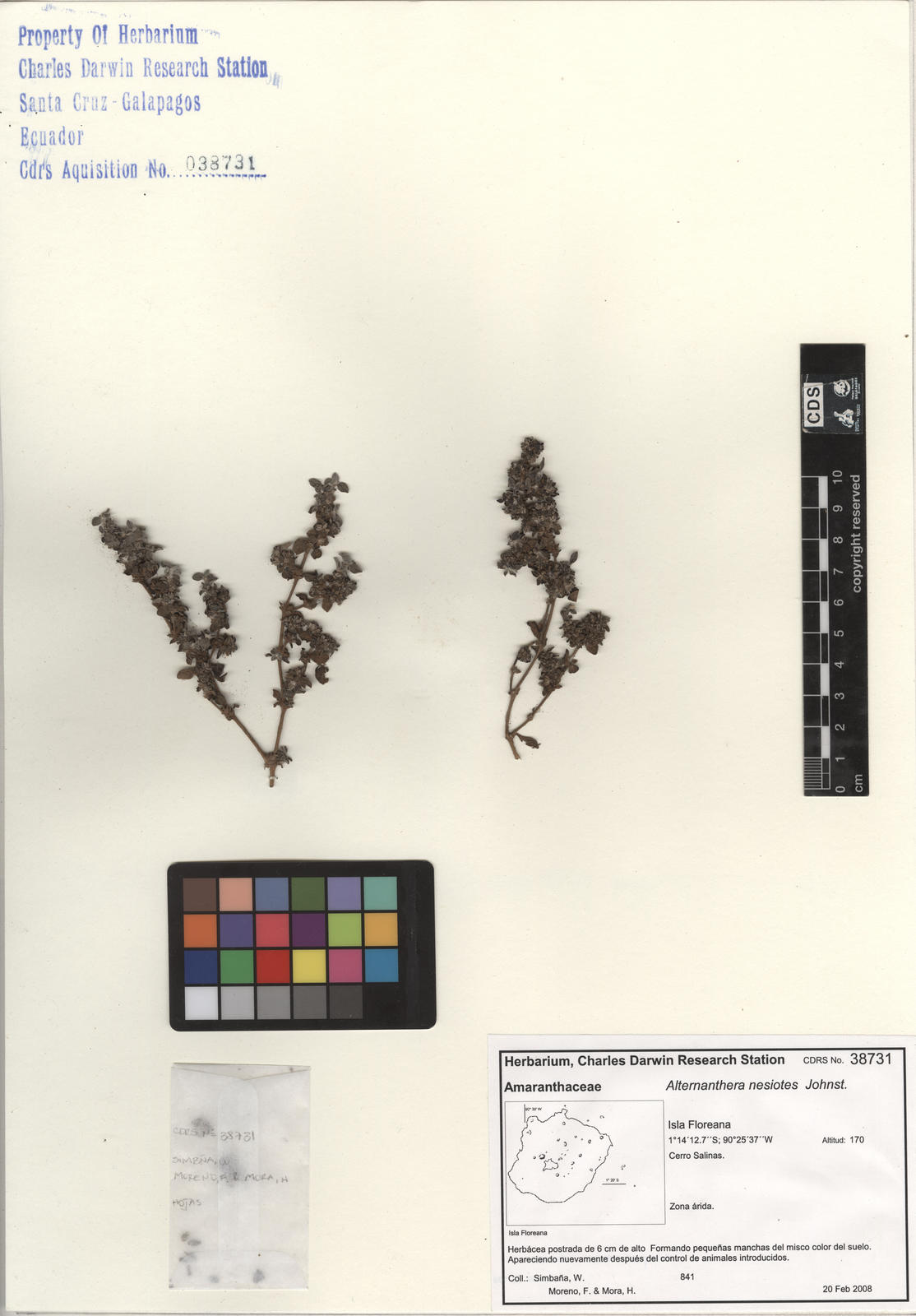
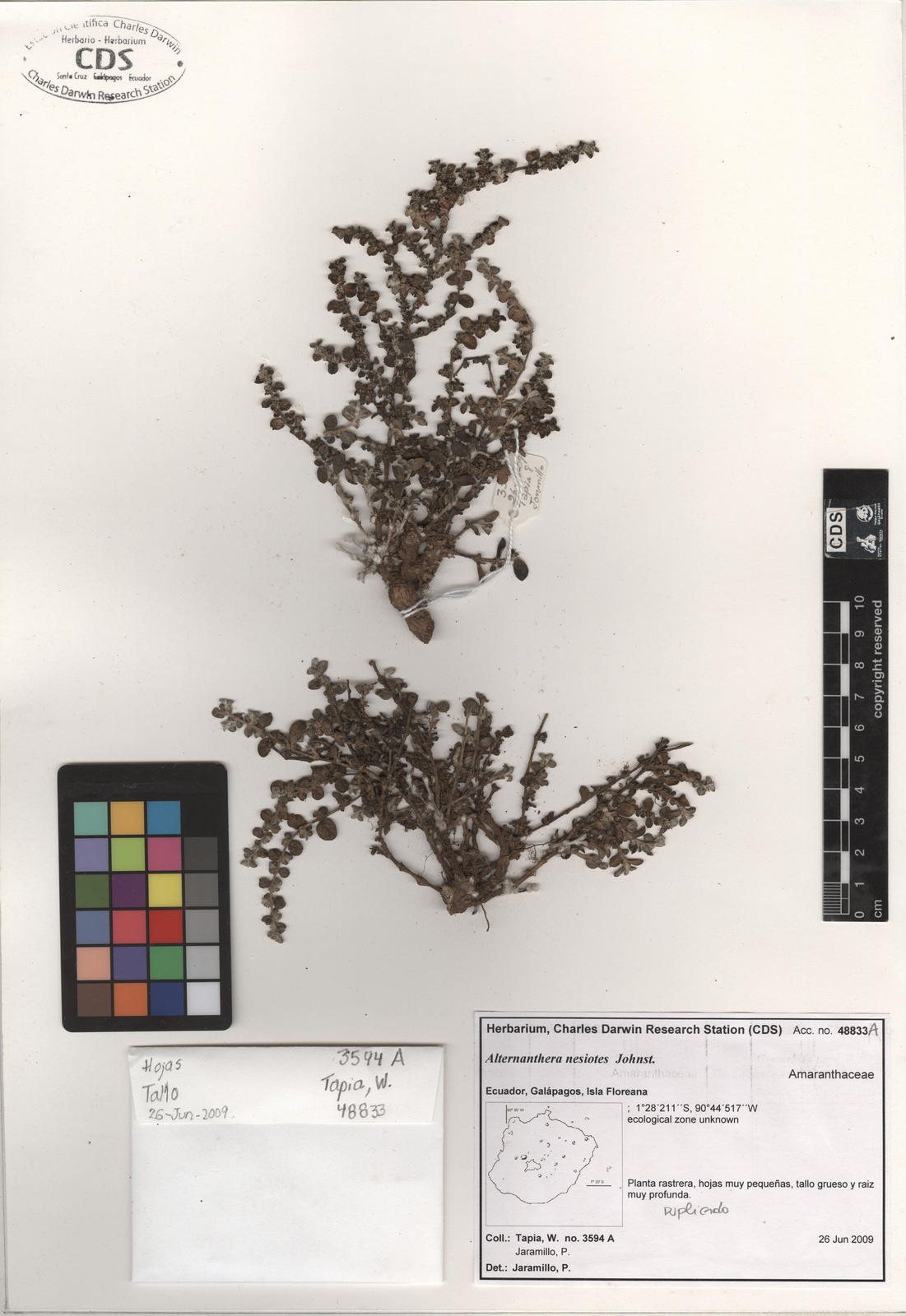

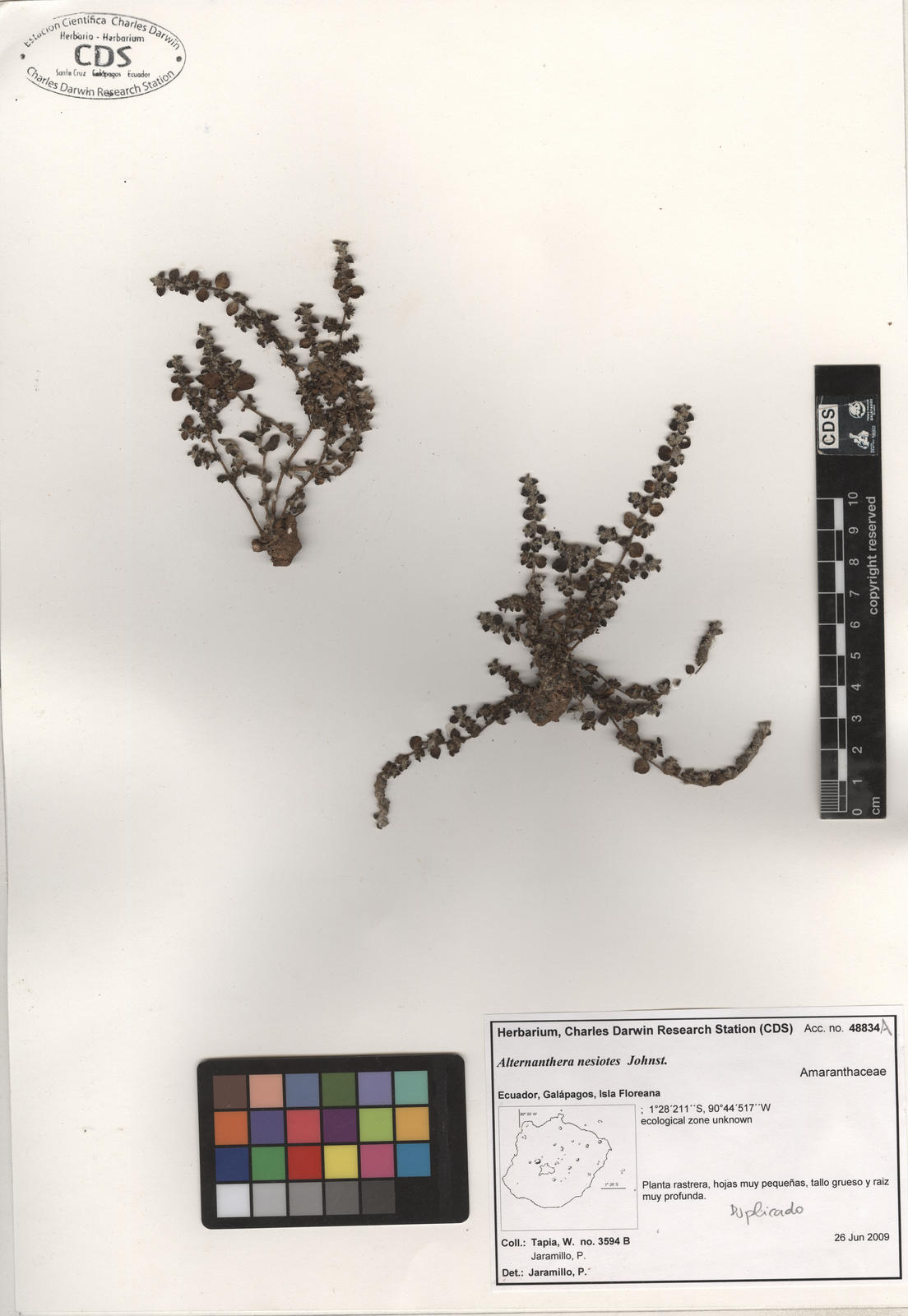
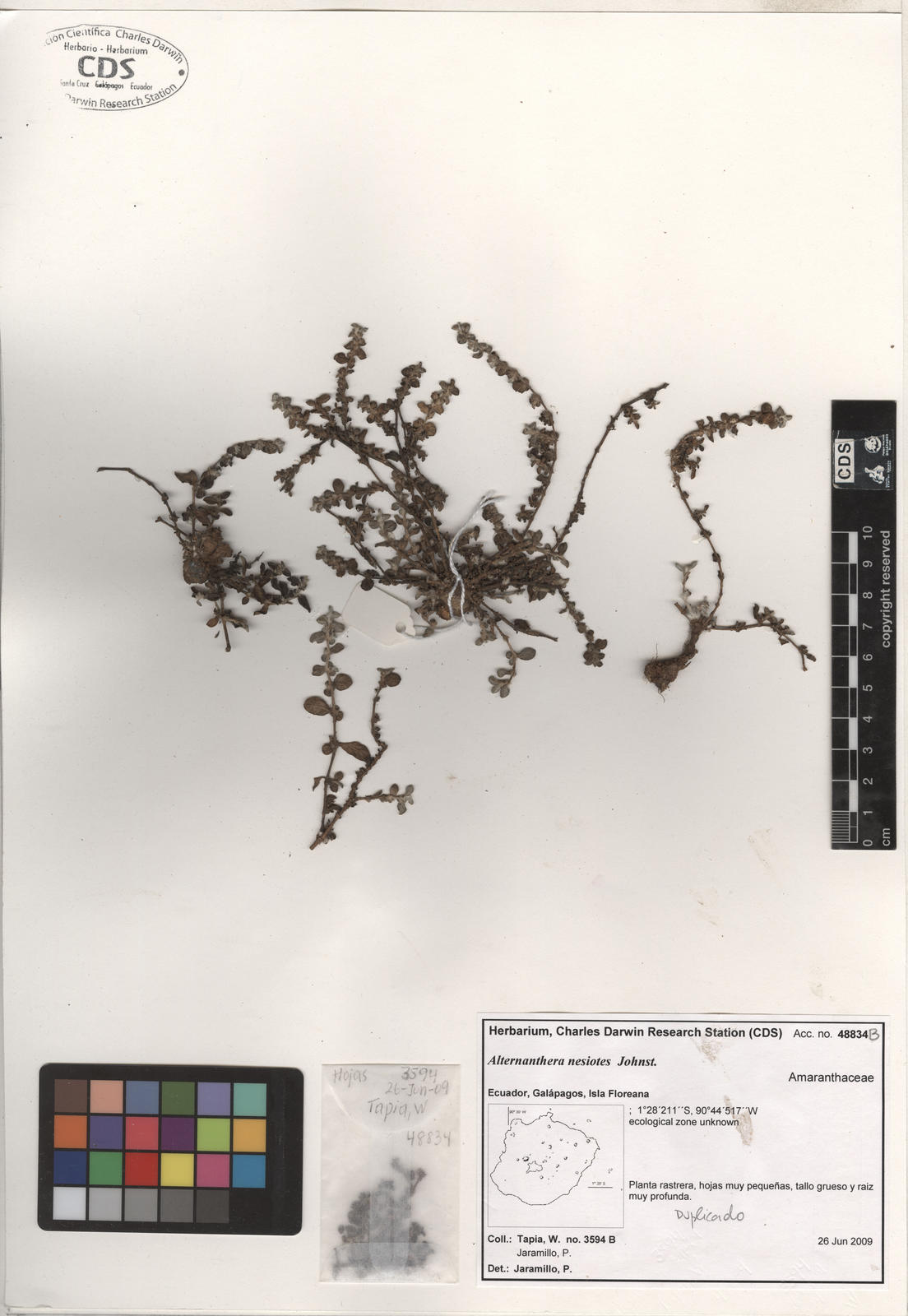

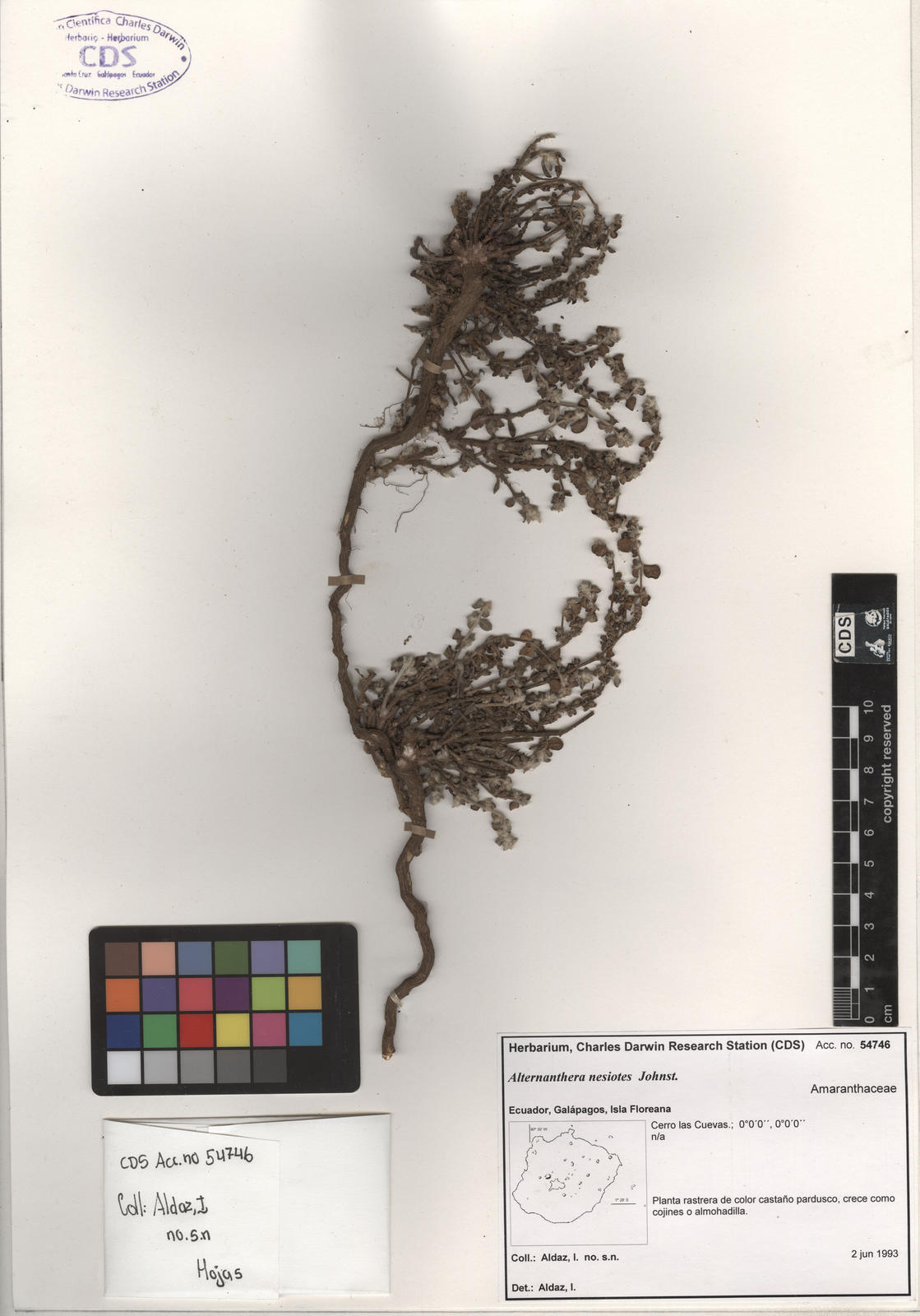

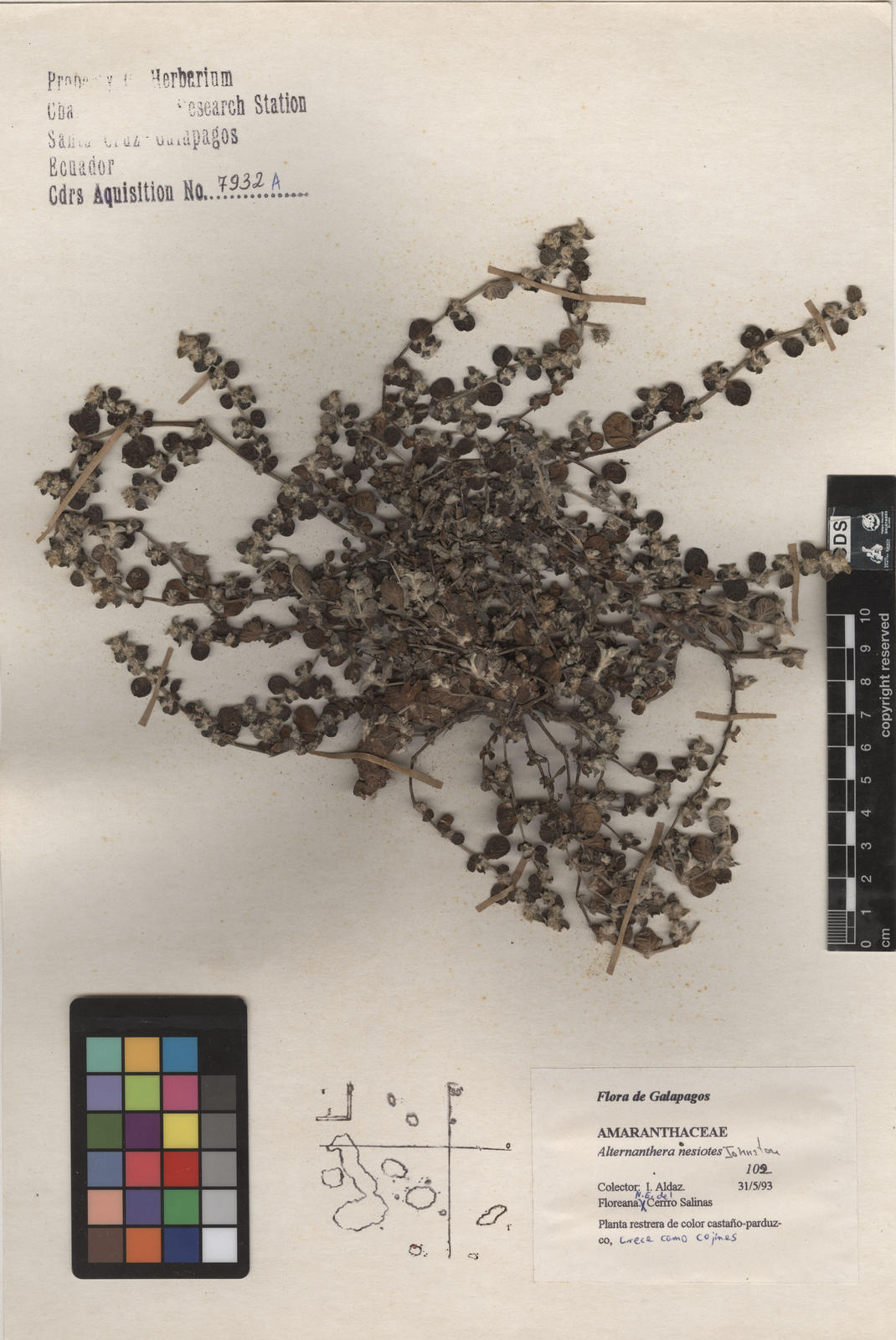
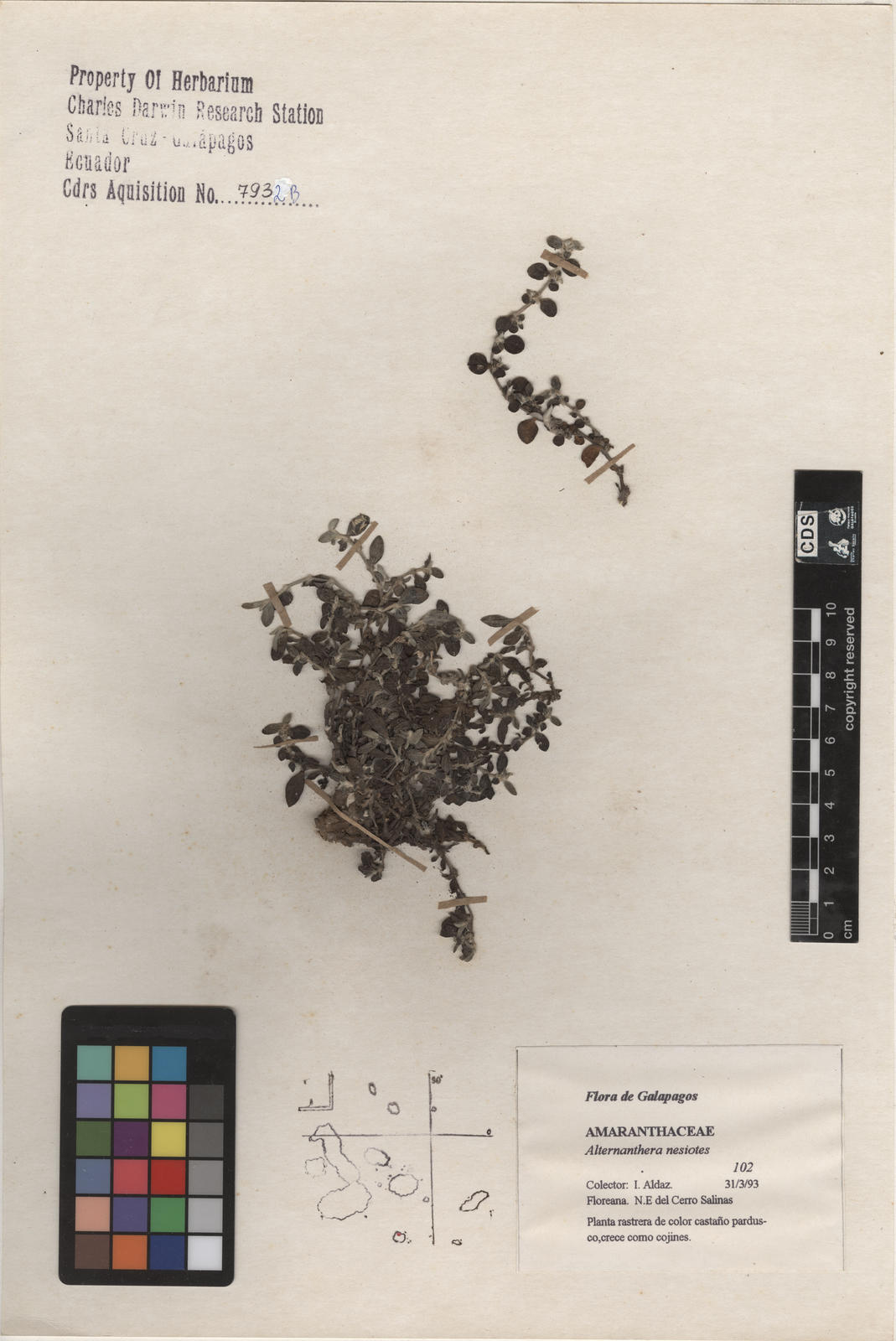

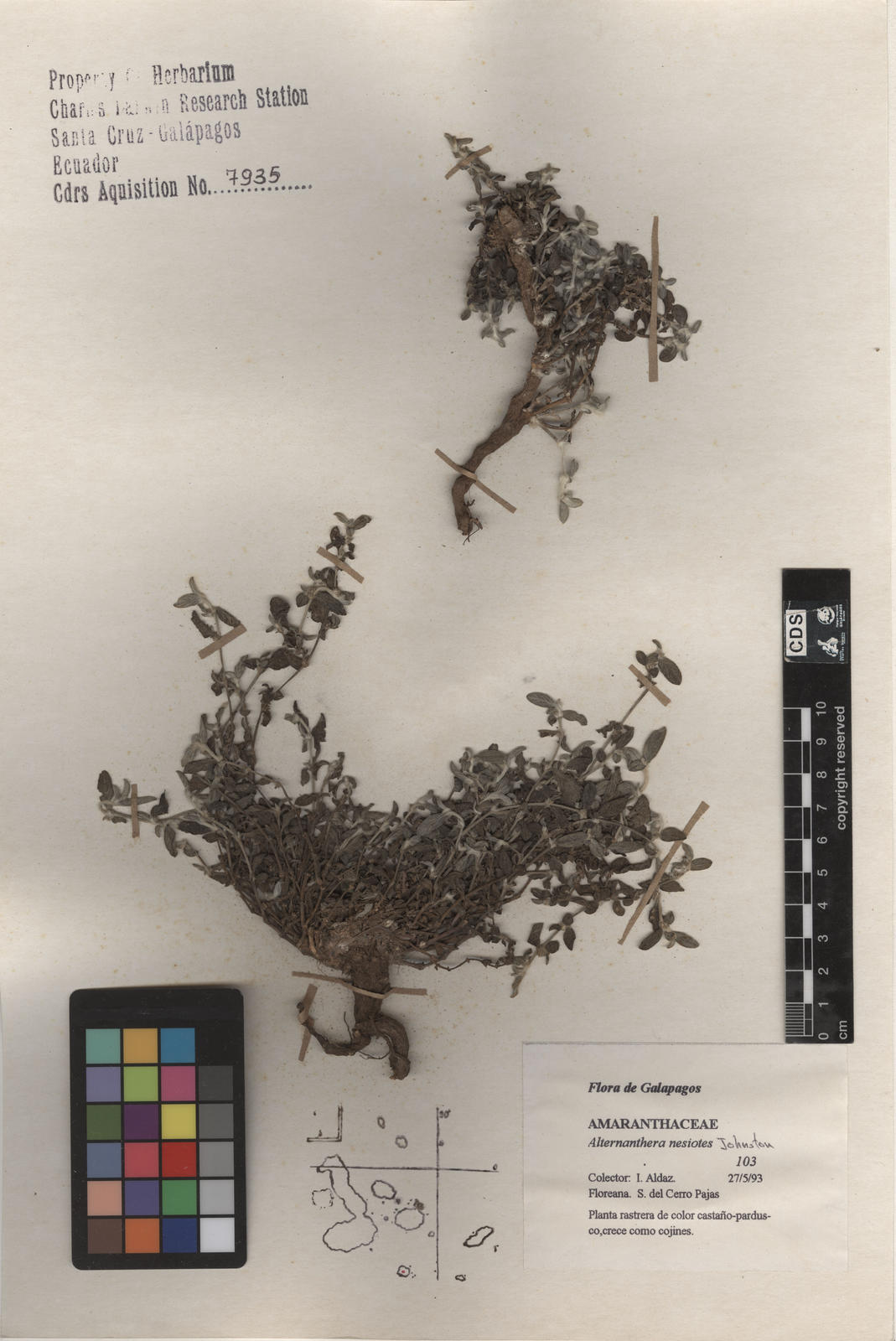
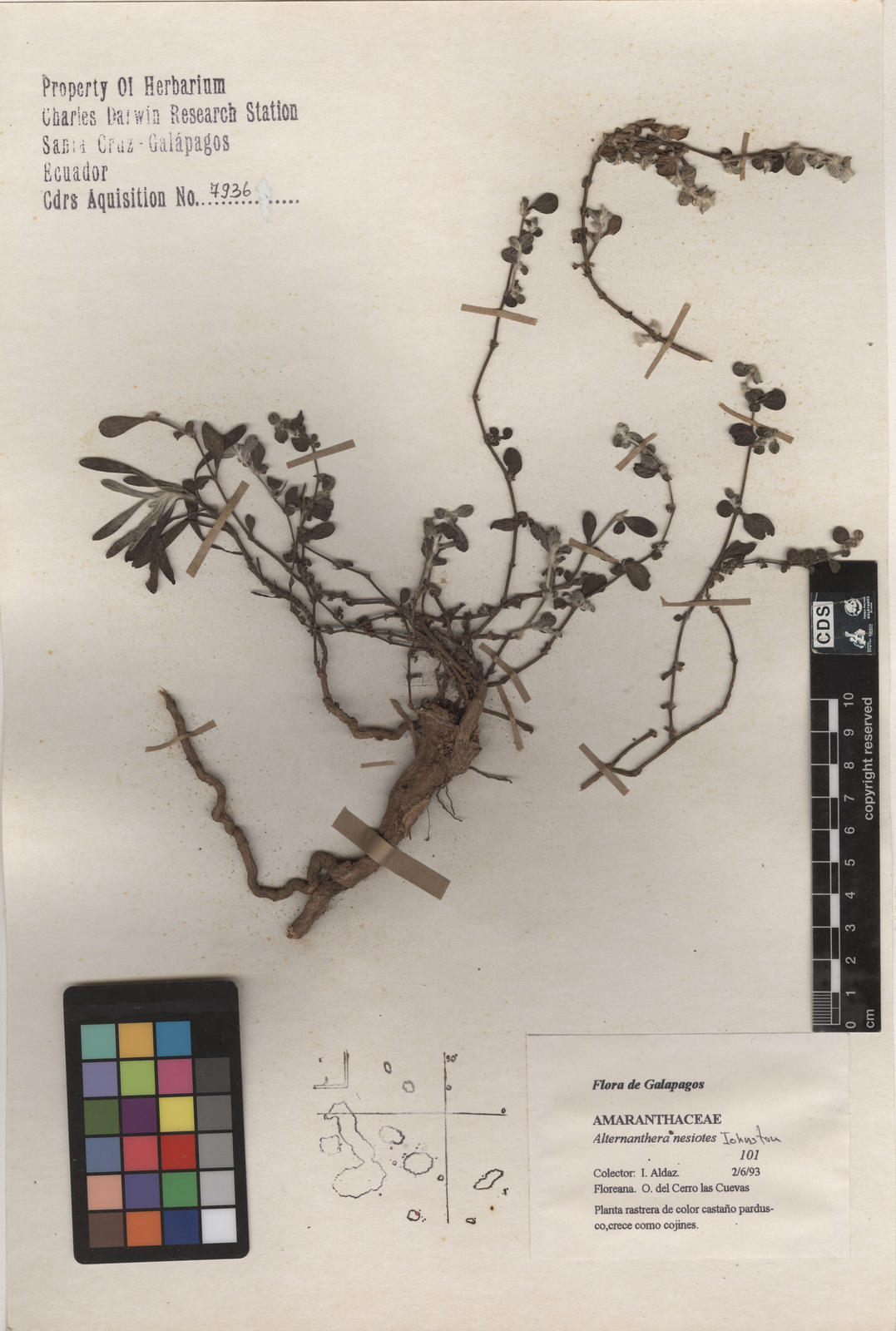
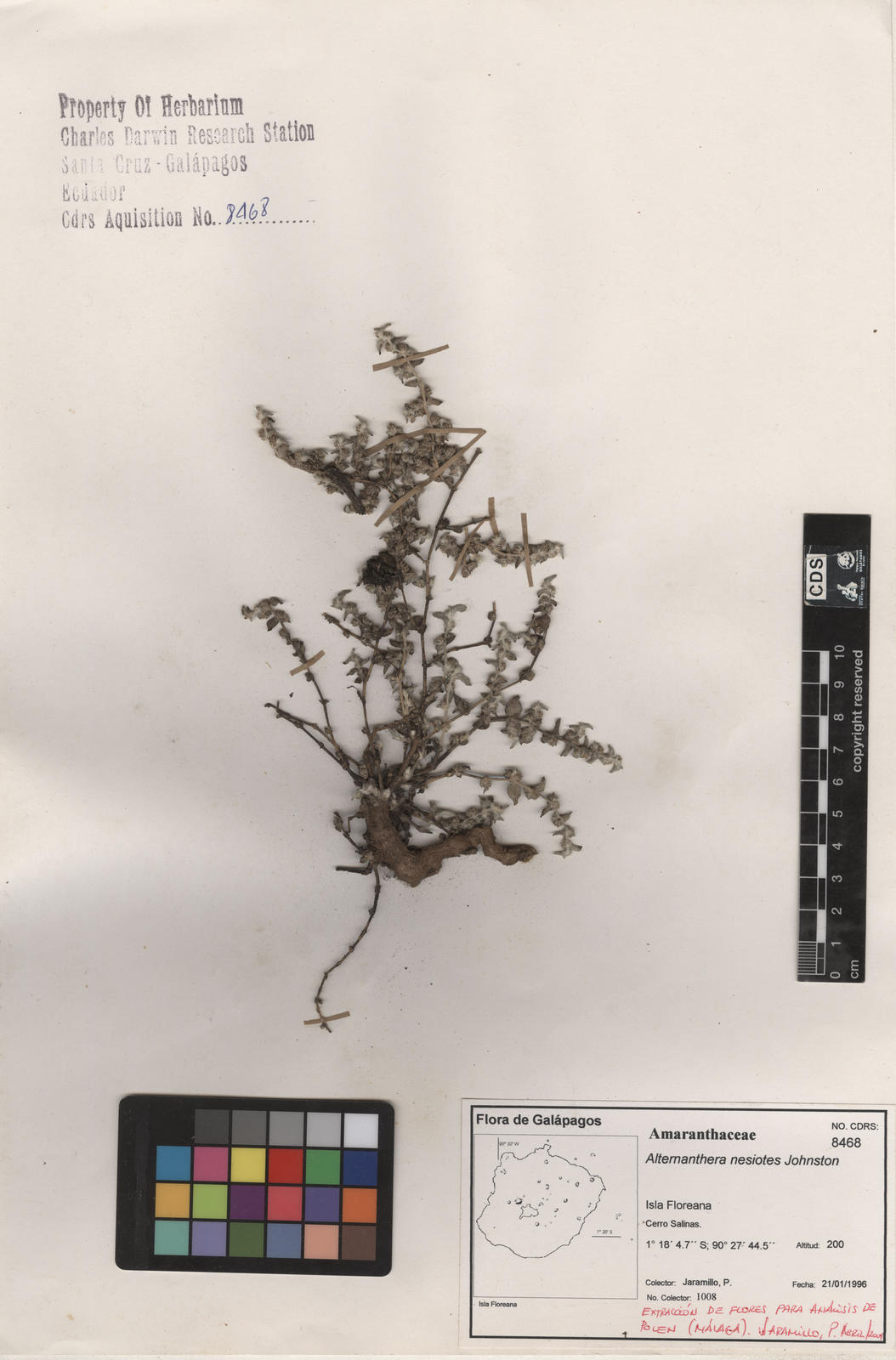
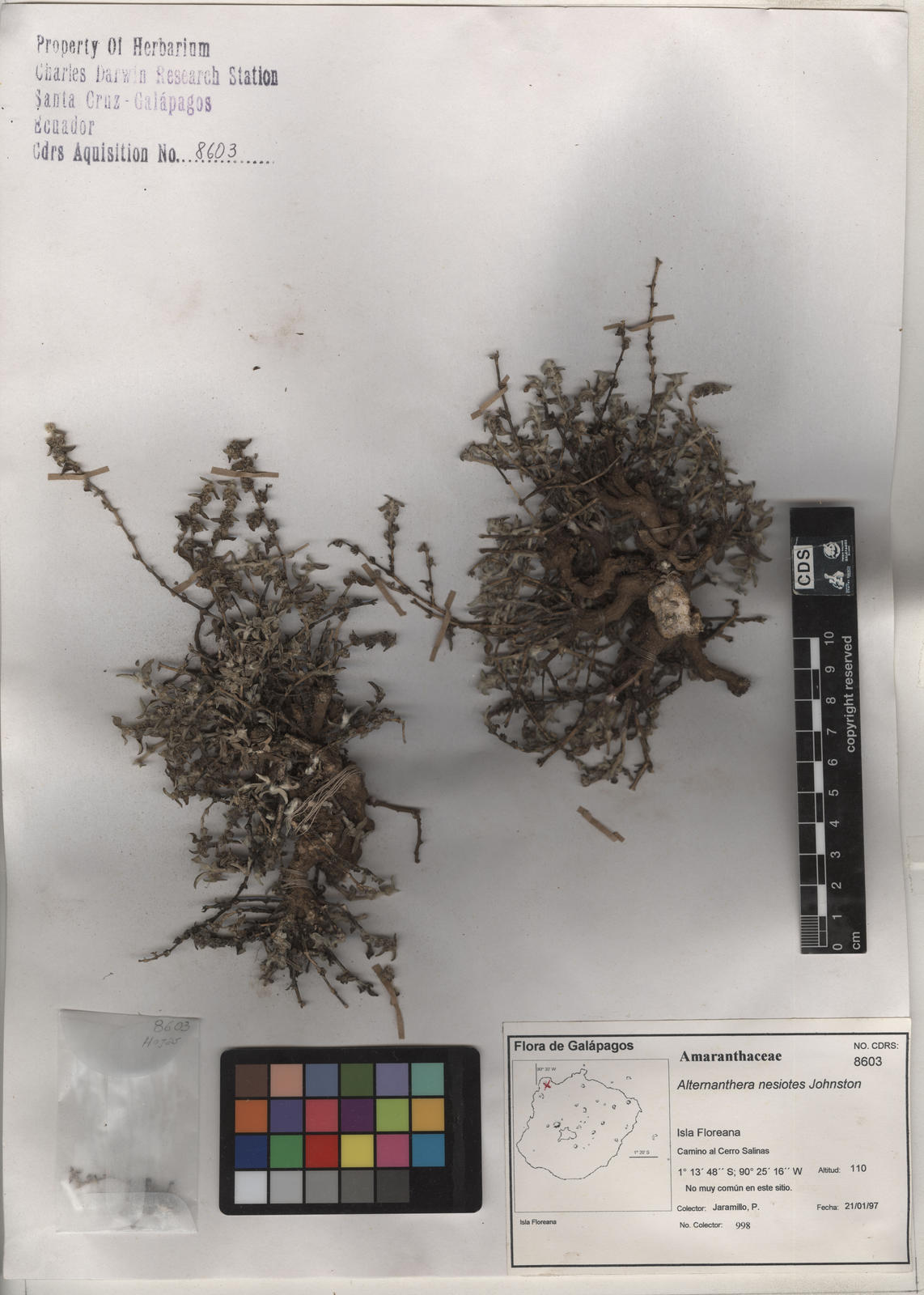


Root solid vertical, stems postrate with silvery leaves, suborbicular grayish brown, young leaves and shoots densely pubescent that have silvery appearance and flower heads solitary in axils leaves.
It is found in arid regions and on volcanic rocks in open vegetation. There is a suspected continuing decline in habitat quality due to invasive plants (Mauchamp et al. 1997).
Domain
Eukaryota
Kingdom
Plantae
Phylum
Magnoliophyta
Class
Magnoliopsida (= Dicotyledoneae)
Order
Caryophyllales
Family
Amaranthaceae
Genus
Alternanthera
Species
nesiotes
Taxon category: Accepted
Taxon origin: Endemic
Distribution: Species known from approximately five populations, all on Floreana Island, probably damaged by feral goats. One population on western Floreana Island was invaded by Lantana camara species.
- Wiggins, I.L. Porter, D.M. (1971) Flora of the Galapagos Islands Standford University Press, Stanford.
- Adsersen, H. (1989) The Rare Plants of the Galapagos Islands, Ecuador and their Conservation. Biol. Conservation 47(1): 49-77.
- Mauchamp, A. Aldaz, I., Ortiz, E. & Valdebenito, H. (1998) Threatened species, a re-evaluation of status of eight endemic plants of the Galapagos. Biodiversity and Conservation 7: 97-107.
- Howell, J.T. (1933) The Amaranthaceae of the Galapagos Islands. Proc. Calif. Acad. Sci. 21(9) 87-116.
- Johnston, I.M. (1923) Diagnoses and Notes Relating to the Spermatophytes Chiefly of North America. Contr. Gray Herb. 68: 80-104.
- Jaramillo, P. (2000) Plantas amenazadas y medidas de conservación en varias islas del archipiélago. Informe Galápagos, 70-76 (Eds P. Ospina and E. Muñoz.). Quito-Ecuador: Fundación Natura y el Fondo Mundial para la Naturaleza (WWF).
- Atkinson, R. Jaramillo, P., Simbaña, W., Guézou, A. & Coronel, V. (2008) Advances in the conservation of threatened plant species of Galápagos. Galápagos Report, 97-102 (Eds L. Cayot and V. Toral). Puerto Ayora, Galápagos, Ecuador.
- Eliasson, U. (1989) Especies de Amaranthaceae en las Islas Galápagos y sus relaciones con las especies del continente Sudamericano. Pg. 33 - 38. Memorias. Taller sobre investigación Botánica y menejos en Galápagos.
- Lawesson, J.E. (1987) Especies de plantas amenazadas y lugares prioritarios para la conservación de las plantas en las Islas Galápagos. Memorias. Taller de Investigación Botánica y Manejo en Galápagos
- Lawesson, J.E. Hamann, O., Black, J. (1987) Recopilación de las recomendaciones del taller: Investigación Botánica y Manejo en Galápagos Memorias. Investigación Botánica y Manejo en Galápagos. Pg.329-336
- León-Yánez, S. Valencia, R., N. Pitman, L. Endara, C. Ulloa Ulloa & H. Navarrete (2011) Libro rojo de las plantas endémicas del Ecuador. 2 da. Edición. Publicaciones del Herbario QCA, Pontificia Universidad Católica del Ecuador, Quito. Pp. 957.


